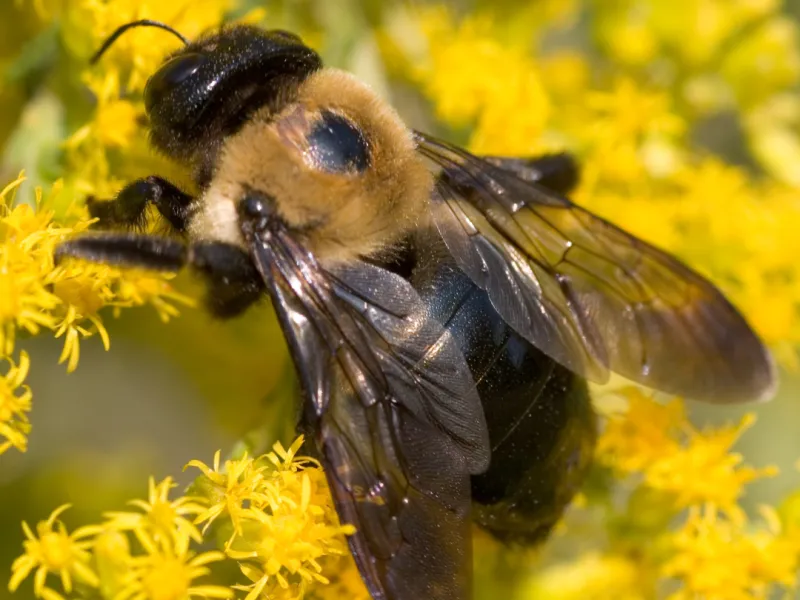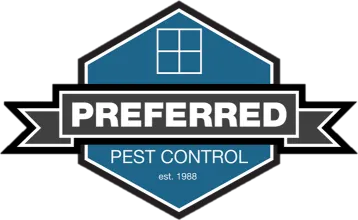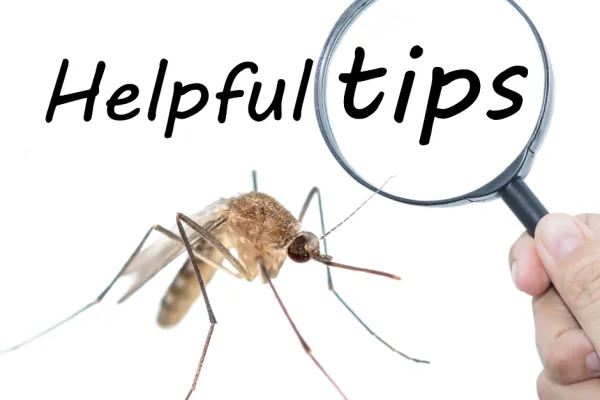Everything About Carpenter Bees

Buzz Off! Everything Savannah Needs to Know About Carpenter Bees
If you've noticed big, shiny bees hovering near your porch, deck, or eaves in Savannah, GA, chances are you've seen a carpenter bee. These wood-drilling insects are native pollinators with some truly impressive construction skills… but carpenter bees can also be a real nuisance to homeowners.
Let's break down what makes these bees tick—and how Preferred Pest Control can help keep your home safe from their woodworking hobby.
What Are Carpenter Bees?
Carpenter bees are the chunky cousins of bumble bees. At first glance, they look pretty similar—but look closer. While bumble bees are fuzzy all over, carpenter bees have shiny, nearly hairless black abdomens. It's like they're wearing a sleek black suit with a yellow fur shrug!
Here in the eastern U.S., especially around Savannah, we mostly see the Eastern carpenter bee (Xylocopa virginica), which can grow up to 1 inch long. Females have a solid black face and do the drilling, while the males (with pale faces and big eyes) hover protectively nearby, often acting more aggressive than they really are.
Where Did Carpenter Bees Come From?
Good news: they're not invaders! Carpenter bees are native to North America, and they've been here for millions of years. They've evolved to thrive in wooded environments from the East Coast to the West. The only reason they've expanded their range is because we've helped by building decks, fences, and homes with soft, unfinished wood they just can't resist.
Why Are They Drilling Into My House?
Unlike termites, carpenter bees don't eat wood. They sculpt it. Female bees use their powerful mandibles (little wood-chomping jaws) to tunnel into wood and create nurseries for their young. They especially love:
Unfinished or weathered wood (pine, cedar, redwood)
Sun-exposed areas like fascia boards, railings, and rafters
Vertical surfaces that stay warm enough for baby bees to grow
Inside each tunnel, the female carpenter bee leaves behind a few "pollen loaves" and an egg, sealing up each section like a high-end Airbnb for future bees.
What Do Carpenter Bee Holes Look Like?
Here's the giveaway: a perfectly round hole, about the size of your pinky (½ inch wide), usually found on the underside of boards or in sheltered, sunny areas. These aren't random chew marks—these are architectural masterpieces, crafted with purpose.
Over time, the bees may return to the same hole, expand the tunnel, and cause even more structural damage.
Are Carpenter Bees Dangerous?
Not exactly. Male carpenter bees don't sting; females can, but they're pretty chill unless provoked. But what they lack in aggression, they make up for in persistence—and if left alone, they can weaken wood and create long-term damage to your home.
How Do I Prevent Carpenter Bee Damage?
Here's what works best in Savannah:
Seal or paint all exposed wood around your home
Replace soft, weathered boards with treated lumber
Install wood alternatives or provide nesting blocks nearby as a decoy
Contact a professional if you're seeing recurring bee activity or wood damage
Say Goodbye to Carpenter Bees—Call the Pros in Savannah
At Preferred Pest Control, we specialize in identifying and treating carpenter bee infestations before they become a serious issue. Our expert team knows how to safely remove carpenter bees and help you protect your home from future damage.
If you've spotted those tell-tale holes or buzzing bees near your deck, don't wait. Contact us today—we'll help you reclaim your home from these mini carpenters.


